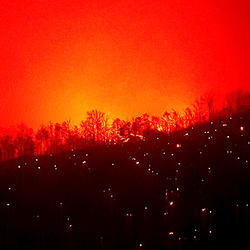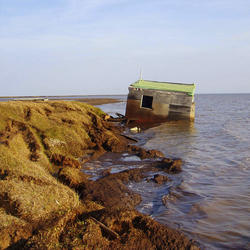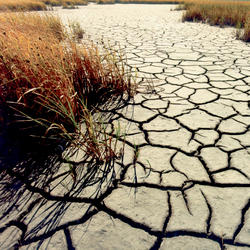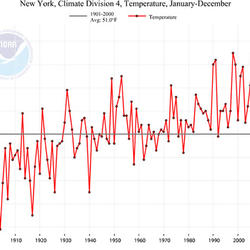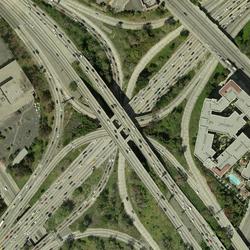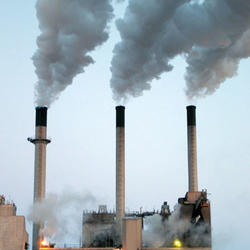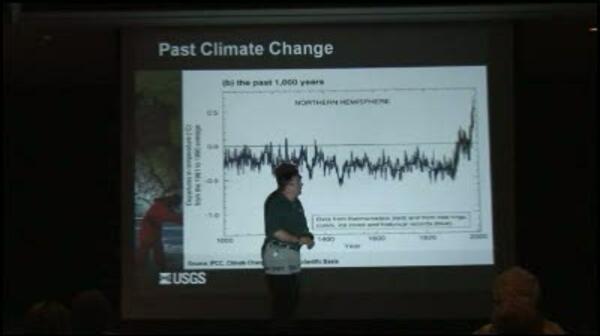Data collected from long distance swims by Polar bears suggest that they do not stop to rest during their journey.
What is the difference between global warming and climate change?
Although people tend to use these terms interchangeably, global warming is just one aspect of climate change. “Global warming” refers to the rise in global temperatures due mainly to the increasing concentrations of greenhouse gases in the atmosphere. “Climate change” refers to the increasing changes in the measures of climate over a long period of time – including precipitation, temperature, and wind patterns.
Related
Does the USGS monitor global warming?
Will global warming produce more frequent and more intense wildfires?
What are the long-term effects of climate change?
How can climate change affect natural disasters?
How do changes in climate and land use relate to one another?
Why is climate change happening and what are the causes?
What are some of the signs of climate change?
How do we know the climate is changing?
What is carbon sequestration?
How does carbon get into the atmosphere?
How much carbon dioxide does the United States and the World emit each year from energy sources?
Data collected from long distance swims by Polar bears suggest that they do not stop to rest during their journey.
Spring 2014. USGS scientists conduct a health evaluation of a young male polar bear in the Arctic as part of the annual southern Beaufort Sea population survey. The bear is sedated for approximately an hour while the team records a variety of measurements and collects key biological samples.
Spring 2014. USGS scientists conduct a health evaluation of a young male polar bear in the Arctic as part of the annual southern Beaufort Sea population survey. The bear is sedated for approximately an hour while the team records a variety of measurements and collects key biological samples.
 PubTalk 11/2012 — Understanding Climate-Wildlife Relationships
PubTalk 11/2012 — Understanding Climate-Wildlife Relationships
-- are American pikas harbingers of changing conditions?
by USGS Research Ecologist Erik Beever
-- are American pikas harbingers of changing conditions?
by USGS Research Ecologist Erik Beever
Summer ice retreat in the Chukchi Sea between Alaska and Russia is a significant climate change impact affecting Pacific Walruses, which are being considered for listing as a threatened species. This twelve minute video follows walruses in their summer sea ice habitat and shows how USGS biologists use satellite radio tags to track their movements and behavior.
Summer ice retreat in the Chukchi Sea between Alaska and Russia is a significant climate change impact affecting Pacific Walruses, which are being considered for listing as a threatened species. This twelve minute video follows walruses in their summer sea ice habitat and shows how USGS biologists use satellite radio tags to track their movements and behavior.
 PubTalk 3/2010 — Changing Times-- A Changing Planet!
PubTalk 3/2010 — Changing Times-- A Changing Planet!
Using phenology to take the pulse of our planet
By Jake F. Weltzin, Executive Director, USA National Phenology Network
Using phenology to take the pulse of our planet
By Jake F. Weltzin, Executive Director, USA National Phenology Network
Climate change is an issue of increasing public concern because of its potential effects on land, water, and biological resources.
Climate change is an issue of increasing public concern because of its potential effects on land, water, and biological resources.
USGS researcher Benjamin Jones examines a collapsed block of ice-rich permafrost on Barter Island along Alaska's Arctic coast.
USGS researcher Benjamin Jones examines a collapsed block of ice-rich permafrost on Barter Island along Alaska's Arctic coast.

Crumbling blocks of permafrost along the Beaufort Coast
Crumbling blocks of permafrost along the Beaufort Coast
USGS integrated drought science
Ecosystem vulnerability to climate change in the southeastern United States
USGS Arctic Science Strategy
Landsat surface reflectance data
Changing Arctic ecosystems: sea ice decline, permafrost thaw, and benefits for geese
Remote sensing of land surface phenology
Delivering climate science about the Nation's fish, wildlife, and ecosystems: the U.S. Geological Survey National Climate Change and Wildlife Science Center
The U.S. Geological Survey Climate Geo Data Portal: an integrated broker for climate and geospatial data
Changing Arctic ecosystems - measuring and forecasting the response of Alaska's terrestrial ecosystem to a warming climate
Polar bear and walrus response to the rapid decline in Arctic sea ice
The concept of geologic carbon sequestration
Assessing carbon stocks, carbon sequestration, and greenhouse-gas fluxes in ecosystems of the United States under present conditions and future scenarios
Related
Does the USGS monitor global warming?
Will global warming produce more frequent and more intense wildfires?
What are the long-term effects of climate change?
How can climate change affect natural disasters?
How do changes in climate and land use relate to one another?
Why is climate change happening and what are the causes?
What are some of the signs of climate change?
How do we know the climate is changing?
What is carbon sequestration?
How does carbon get into the atmosphere?
How much carbon dioxide does the United States and the World emit each year from energy sources?
Data collected from long distance swims by Polar bears suggest that they do not stop to rest during their journey.
Data collected from long distance swims by Polar bears suggest that they do not stop to rest during their journey.
Spring 2014. USGS scientists conduct a health evaluation of a young male polar bear in the Arctic as part of the annual southern Beaufort Sea population survey. The bear is sedated for approximately an hour while the team records a variety of measurements and collects key biological samples.
Spring 2014. USGS scientists conduct a health evaluation of a young male polar bear in the Arctic as part of the annual southern Beaufort Sea population survey. The bear is sedated for approximately an hour while the team records a variety of measurements and collects key biological samples.
 PubTalk 11/2012 — Understanding Climate-Wildlife Relationships
PubTalk 11/2012 — Understanding Climate-Wildlife Relationships
-- are American pikas harbingers of changing conditions?
by USGS Research Ecologist Erik Beever
-- are American pikas harbingers of changing conditions?
by USGS Research Ecologist Erik Beever
Summer ice retreat in the Chukchi Sea between Alaska and Russia is a significant climate change impact affecting Pacific Walruses, which are being considered for listing as a threatened species. This twelve minute video follows walruses in their summer sea ice habitat and shows how USGS biologists use satellite radio tags to track their movements and behavior.
Summer ice retreat in the Chukchi Sea between Alaska and Russia is a significant climate change impact affecting Pacific Walruses, which are being considered for listing as a threatened species. This twelve minute video follows walruses in their summer sea ice habitat and shows how USGS biologists use satellite radio tags to track their movements and behavior.
 PubTalk 3/2010 — Changing Times-- A Changing Planet!
PubTalk 3/2010 — Changing Times-- A Changing Planet!
Using phenology to take the pulse of our planet
By Jake F. Weltzin, Executive Director, USA National Phenology Network
Using phenology to take the pulse of our planet
By Jake F. Weltzin, Executive Director, USA National Phenology Network
Climate change is an issue of increasing public concern because of its potential effects on land, water, and biological resources.
Climate change is an issue of increasing public concern because of its potential effects on land, water, and biological resources.
USGS researcher Benjamin Jones examines a collapsed block of ice-rich permafrost on Barter Island along Alaska's Arctic coast.
USGS researcher Benjamin Jones examines a collapsed block of ice-rich permafrost on Barter Island along Alaska's Arctic coast.

Crumbling blocks of permafrost along the Beaufort Coast
Crumbling blocks of permafrost along the Beaufort Coast



